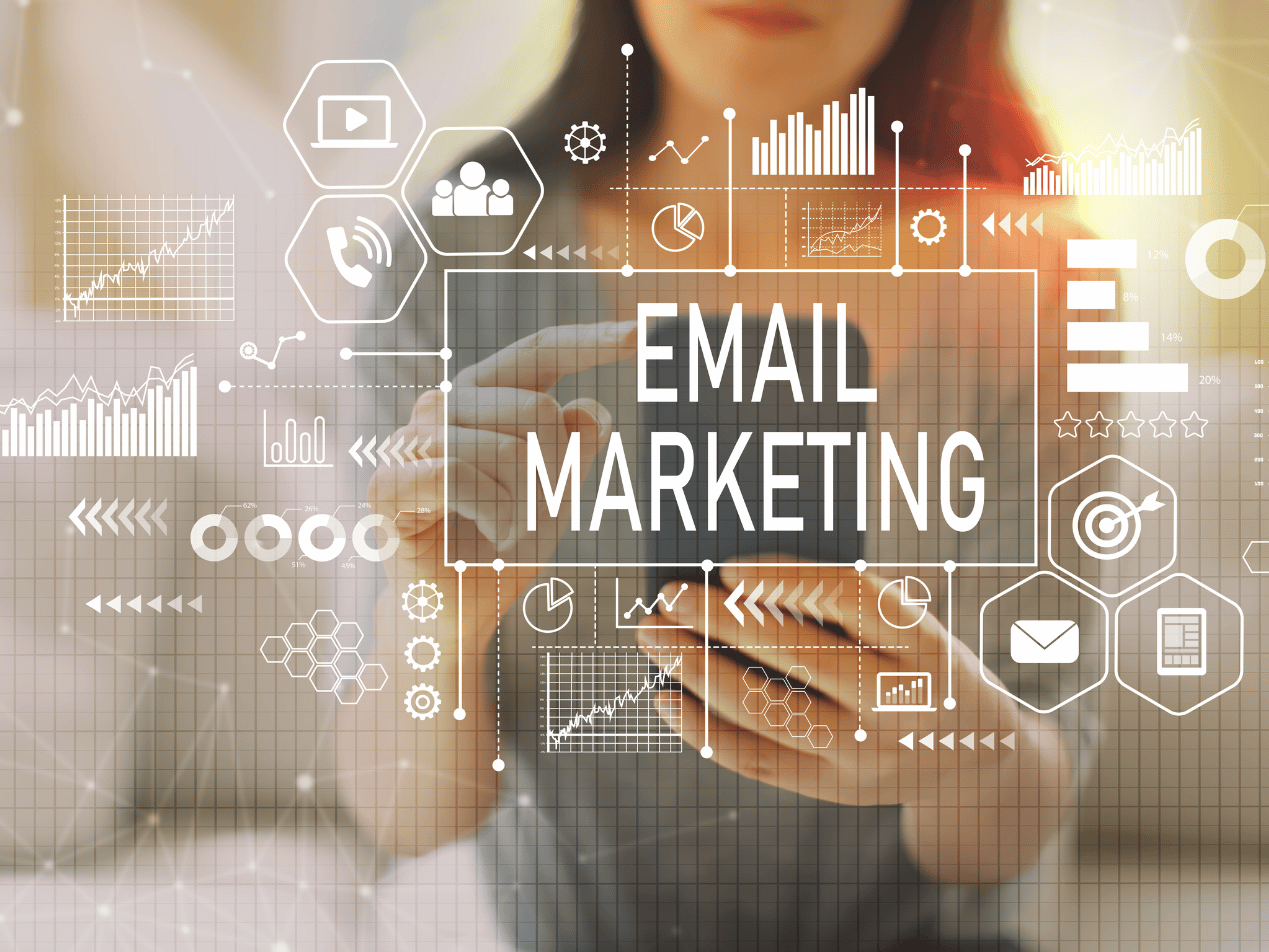
Email marketing is one of the most effective ways to communicate and engage with patients. It is a popular and common tool to increase positive brand awareness. Statistics definitely demonstrate that people are still reliant on email; an estimated 347.3 billion emails are expected to be sent and received in 2023.
Healthcare marketing through email improves patient outreach, education, and ultimately patient care. When done correctly, i.e., with HIPAA compliance, healthcare organizations can leverage email marketing as a powerful connecting tool.
LEARN MORE: HIPAA compliant email: The definitive guide
Let’s explore some basic dos and don’ts to follow when sending marketing emails to patients for optimum engagement.
Healthcare email marketing as a powerful tool
A healthcare organization can use email marketing to engage patients and target specific populations with personalized and general messages.
DIG DEEPER: HIPAA and marketing: What you need to know to build a modern healthcare marketing strategy
With a well-formulated email campaign, healthcare providers could:
- Educate about public health campaigns
- Let subscribers know about ways they can better serve patients
- Promote the latest technologies used to diagnose patients
- Highlight positive patient experiences
- Sustain and/or attract patients
Covered entities could also be patient-focused with targeted campaigns based on patients’ needs, interests, and/or health goals.
Unfortunately, email is also where marketers could accidentally or intentionally breach a patient’s PHI. But when done properly, healthcare email marketing promotes better patient engagement and ultimately better health outcomes. As organizations leverage technology, the more patient engagement positively impacts healthcare.
What’s all the fuss about patient engagement?
Patient engagement is the practice of getting patients involved in their own healthcare to improve outcomes and lower costs. Organizations must adopt patient engagement technology to increase patient relations; email is an effective tool for this. Accordingly, patient relationship management (PRM) is vital for improving patient satisfaction, increasing engagement, and enhancing the overall health experience.
This could mean something as simple as communicating with a patient using the method they prefer. Or it could mean personalizing an email for a patient who has an appointment coming up.
A positive relationship with patients is crucial to closing care gaps, keeping patients informed and fostering trust. It also improves office productivity along with patient satisfaction and loyalty, which in the long run reduces costs and improves results.
The dos and don’ts of email marketing for patient engagement
For patient engagement to be the most effective, patients and physicians need to communicate easily and securely with one another. Sending newsletters, health updates, and marketing messages through email is the best way to do this at scale; in fact the current average ROI for email marketing is $38 for every dollar invested.
To use email marketing properly, however, healthcare providers must understand how to effectively and compliantly engage through email. Organizations must consider how, how often, and why they send marketing messages. Here are a few dos and don’ts on email marketing for patient engagement.
DO ensure your platform remains HIPAA compliant
To engage patients successfully and securely without violating HIPAA, healthcare organizations must utilize a HIPAA compliant email platform that enables:
- Encrypts emails in transit
- Multifactor authentication
- Emphasizes deliverability
Furthermore, healthcare providers shouldn’t use out-of-the-box marketing solutions, especially those that don’t sign BAAs. Do your research and find one that makes emailing easy but secure.
DO grow your email list properly
When creating an email list, start by asking patients before actually including them. The solution is simple: invite them to subscribe. This can be done on a website, in person, or through snail mail.
The basic tenet, consent is key, definitely applies when growing a healthcare marketing email list.
DO create dynamic but relevant subjects and content
Begin by making a good first impression with new subscribers; send a warm welcome email that is friendly but professional.
Make sure all emails aren’t dull, too technical, or like all the rest. Start with a clear and concise subject to grab attention. Keep emails brief and provide value with each message sent. When possible, include a call to action, such as requesting a patient to schedule an appointment or call for a follow-up.
Don’t forget to proofread before scheduling or hitting send. Personalize every chance you get so that the information is relevant to each patient (see more below). Finally, give your subscribers a consistent brand experience with the formatting of your emails, always including basic contact information and a method to opt-out.
DO use segmentation to ensure emails reach your intended audience
Before beginning an email marketing campaign, determine who to reach. For each campaign, it is important to target people interested in specific products or services through segmentation.
CHECK OUT: Email segmentation added to Paubox Marketing
Email segmentation allows healthcare marketing professionals to deliver highly relevant content to specific individuals on an as-needed basis. For example, provide kid-related information to a group of patients with children or announce a new clinic opening to a group of patients from the same geographic location.
DO send the right type of email
Ensure you send the right type of email to the right patient at the right moment. Not every patient needs to know everything. There are four main types of marketing emails:
- Thank you/confirmation emails (for signing up or downloading something)
- Nurture emails (as a follow-up before and after an appointment)
- Personal emails (catered to a specific patient about their care)
- Ongoing ‘Seinfeld’ emails (method to send clinic-specific positive experiences)
Other types of emails to send may include general information, tips, promotions, updates, or events. When to send email campaigns depends on the patient and what is occurring at the practice or hospital.
DON’T get caught by spam filters
Ensure your emails do not become spam by subscribers’ email platforms or email recipients. In fact, ask subscribers to add you to their whitelist to keep you safe in the future. Moreover, never use a no-reply email address—let them write you back and interact with you. You can avoid this step by using email platforms that can deliver secure email seamlessly to inboxes instead of forcing recipients to a portal.
Avoid words, word patterns, and subjects considered spam, especially phrases that include ‘special offer’ or ‘discount.’ Don’t use a lot of or huge images and avoid attachments as much as possible.
Keep your emails standardized and personalized.
DON’T send email blasts
To add to this, sending a generic email blast to your entire subscription list as it is a great way to get caught in a spam filter or have high unsubscribe rates. While email blasts are considered simple to execute, and can have uses for sending generic messages, they are not the best tool to use if you're trying to drive outcomes.
Choose the type of email and how you plan to send it depending on your need.
DON’T send poorly formatted emails
Less-than-perfect emails that aren’t properly formatted may remain unread by subscribers. That means:
- Be consistent and straightforward
- Check your spelling and grammar
- Don’t use ALL CAPS or exclamation points
- Avoid generic and lengthy emails
It's not enough to just send emails, you want to be sure they are read and drive the outcomes you want to happen.
DON’T make it difficult to unsubscribe
This is worth repeating for compliance with the CAN-SPAM Act. Make it clear that patients can unsubscribe from email communication whenever they would like. Add opt-out information to the bottom of every email and make sure unsubscribe is only a click away.
Keep it always easy to find. Don’t forget that healthcare subscribers must be able to opt-in and opt-out.
DO keep your patients safe with Paubox Marketing
Paubox Marketing is the only healthcare email marketing tool that allows you to prioritize outcomes by personalizing your marketing emails and still delivering a seamless experience for recipients. No portals or extra logins are necessary. All while staying HIPAA compliant.
For healthcare providers, personalized email marketing is a powerful way to improve patient engagement. When implemented properly, patient engagement strategies, like email marketing, work well to make patients feel more included in their personal health.
Subscribe to Paubox Weekly
Every Friday we'll bring you the most important news from Paubox. Our aim is to make you smarter, faster.





